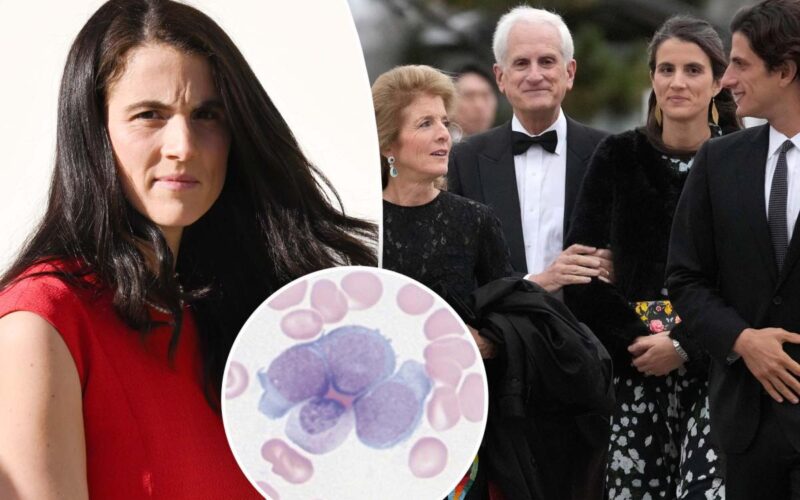Tatiana Schlossberg, the youngest granddaughter of President John F. Kennedy, recently revealed she was diagnosed with terminal acute myeloid leukemia (AML) due to a rare genetic anomaly.
In a personal essay published Saturday in The New Yorker, the 35-year-old mother of two wrote that she has an inversion of chromosome 3, which significantly worsens AML survival rates.
AML only accounts for 1% of all cancers, typically affecting people over the age of 65. Some forms are treatable, but Schlossberg’s subtype has a poor prognosis.
She has been in clinical trials of CAR-T-cell therapy for certain blood cancers, but has been told by doctors that she has less than a year to live.
AML is an aggressive blood and bone marrow cancer caused by genetic mutations in blood stem cells. Here’s a look at Schlossberg’s extremely rare genetic flaw.
What is an inversion 3 mutation?
An inversion 3 mutation happens when a segment of chromosome 3 breaks, flips and reinserts itself in reverse order. It can be inherited or acquired at some point.
The third-largest chromosome in humans, chromosome 3 contains over a thousand genes that influence many bodily functions and physical traits.
It’s been linked to several genetic conditions, including certain cancers, Alzheimer’s disease, Parkinson’s disease and 3p deletion syndrome, a condition that can lead to developmental delays and intellectual disability.
It’s responsible for about 1.5% of AML cases.
What are the symptoms of this mutation?
Someone with inversion 3 may not know they have this abnormality until they are diagnosed with AML.
Symptoms include fatigue, fever, weight loss and night sweats.
Those with inversion 3 mutation AML often have abnormal or elevated blood platelet counts, something Schlossberg’s doctor noticed in 2024 after she had given birth to her second child.
A normal white blood cell count is typically between 4,500 and 11,000 cells per microliter.
Schlossberg said that hers was 131,000 cells per microliter, far above the norm.
A high white blood cell count can be a sign of leukemia, as the bone marrow produces abnormal cells called myeloid blasts that rapidly grow, according to the Cleveland Clinic.
How is it diagnosed?
Inversion 3 can be diagnosed with cytogenetic and molecular tests.
These tests can determine if the chromosomes have rearranged themselves as well as any mutations associated with leukemia.
Blood and bone marrow samples are taken as the first step to check for leukemia, which may then determine if there’s an underlying gene mutation.
How does an inversion 3 mutation impact an acute myeloid leukemia diagnosis?
Inversion 3 mutation leads to the misexpression of genes like EVI1 and GATA2, triggering uncontrolled cancer cell growth.
Inversion 3 gene mutation is associated with a low chance of recovery, high likelihood of worsening symptoms or a shorter life expectancy.
Often linked to treatment-resistant diseases, the treatment for inversion 3 mutations is extremely difficult due to how the cancerous cells multiply uncontrollably.
Treatment options for AML can include chemotherapy, targeted therapy or allogeneic stem cell transplantation using stem cells from donors.
After a few months of chemo, Schlossberg mentioned in her essay that her older sister, Rose, 37, had been a match and donated her stem cells.








